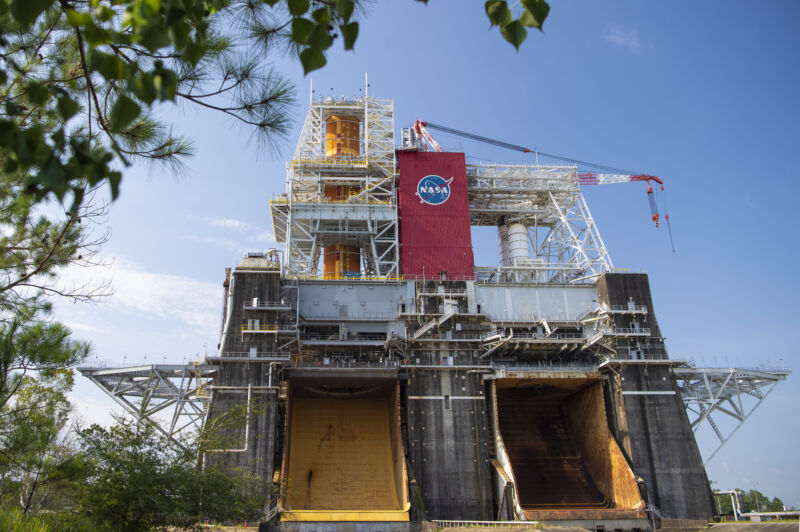Leonard Cohen’s Reps Say They Specifically Declined GOP Requests to Use ‘Hallelujah’ at Convention

AP
Representatives of the late Leonard Cohen’s estate and publishing company have both issued statements saying they declined requests for his song “Hallelujah” to be used at the Republican National Convention — even though it was played twice following the conclusion of Donald Trump’s speech Thursday night.
The estate’s attorney made a threat of legal action as part of her statement.
Said Michelle L. Rice, the Cohen estate’s lawyer: “We are surprised and dismayed that the RNC would proceed knowing that the Cohen Estate had specifically declined the RNC’s use request, and their rather brazen attempt to politicize and exploit in such an egregious manner ‘Hallelujah,’ one of the most important songs in the Cohen song catalogue. We are exploring our legal options.”
Rice got an extra jab in that Cohen fans will enjoy. “Had the RNC requested another song, ‘You Want it Darker,’ for which Leonard won a posthumous Grammy in 2017, we might have considered approval of that song.”
Cohen’s publishing company, Sony/ATV Music Publishing, said it, too, had been approached and then, apparently, subsequently ignored after saying no.
Confirmed Brian J. Monaco, Sony/ATV’s president and global chief marketing officer: “On the eve of the finale of the convention, representatives from the Republican National Committee contacted us regarding obtaining permission for a live performance of Leonard Cohen’s ‘Hallelujah.’ We declined their request.”
The singer of the first version of “Hallelujah” that was heard, Tori Kelly, quickly took to Twitter after the conclusion of the telecast to assure upset fans that she had nothing to do with the usage of her recording — and, unlike the estate and publisher, she was apparently never approached about it.
“Seeing messages about my version of ‘Hallelujah,’” Kelly tweeted. “All i know is neither myself nor my team received a request.” (Kelly subsequently deleted her tweet, perhaps feeling heat from some Trump-supporting Twitter users unhappy that she was disavowing prior knowledge of the usage.)
Many Cohen fans were displeased when they heard Kelly’s recording of the song playing during the fireworks that capped Trump’s address — sandwiched right between “She’s a Grand Old Flag” and Lee Greenwood’s “God Bless the USA” as pyrotechnics spelled out “TRUMP” and “2020” over the Washington mall.
Said fans were even less enthused when “Hallelujah” was quickly reprised, at greater volume, in a live, operatic rendition by Christopher Macchio, adjacent to “Ave Maria,” perhaps in the belief that Cohen’s song, too, is a religious one.
As the existence of a campaign event at the White House would itself indicate, with some claiming it violated the Hatch Act, the Trump campaign has not been one to stand on ceremony. Previous entreaties from musicians to stop using their music have been ignored, so perhaps the only surprise is that the campaign even asked. Neil Young recently became the first musician to file a lawsuit against the campaign after his requests to not have his music used by Trump fell on deaf ears. The Rolling Stones recently teamed up with ASCAP and BMI to publicly remind the campaign that it needs a specific political license, not just a venue license, to use their songs.
In contrast to the Democrats’ music-filled convention the previous week, there was almost no contemporary music of any sort played at the Republican convention before the twin “Hallelujah” airings Thursday night, which had led some observers to believe that perhaps the Trump campaign was taking more seriously musicians’ widespread objections. However, Elton John’s “I’m Still Standing” had been played earlier Thursday as walk-on music for Ivanka Trump, despite John’s previously stated dismay at Trump campaign usage.
The only non-operatic performer to appear during the GOP convention was country singer Trace Adkins, who sang “The Star Spangled Banner” live on Wednesday following vice president Mike Pence’s speech.
Representatives of the late Leonard Cohen’s estate and publishing company have both issued statements saying they declined requests for his song “Hallelujah” to be used at the Republican National Convention — even though it was played twice following the conclusion of Donald Trump’s speech Thursday night.
The estate’s attorney made a threat of legal action as part of her statement.
Said Michelle L. Rice, the Cohen estate’s lawyer: “We are surprised and dismayed that the RNC would proceed knowing that the Cohen Estate had specifically declined the RNC’s use request, and their rather brazen attempt to politicize and exploit in such an egregious manner ‘Hallelujah,’ one of the most important songs in the Cohen song catalogue. We are exploring our legal options.”
Rice got an extra jab in that Cohen fans will enjoy. “Had the RNC requested another song, ‘You Want it Darker,’ for which Leonard won a posthumous Grammy in 2017, we might have considered approval of that song.”
Cohen’s publishing company, Sony/ATV Music Publishing, said it, too, had been approached and then, apparently, subsequently ignored after saying no.
Confirmed Brian J. Monaco, Sony/ATV’s president and global chief marketing officer: “On the eve of the finale of the convention, representatives from the Republican National Committee contacted us regarding obtaining permission for a live performance of Leonard Cohen’s ‘Hallelujah.’ We declined their request.”
The singer of the first version of “Hallelujah” that was heard, Tori Kelly, quickly took to Twitter after the conclusion of the telecast to assure upset fans that she had nothing to do with the usage of her recording — and, unlike the estate and publisher, she was apparently never approached about it.
“Seeing messages about my version of ‘Hallelujah,’” Kelly tweeted. “All i know is neither myself nor my team received a request.” (Kelly subsequently deleted her tweet, perhaps feeling heat from some Trump-supporting Twitter users unhappy that she was disavowing prior knowledge of the usage.)
Many Cohen fans were displeased when they heard Kelly’s recording of the song playing during the fireworks that capped Trump’s address — sandwiched right between “She’s a Grand Old Flag” and Lee Greenwood’s “God Bless the USA” as pyrotechnics spelled out “TRUMP” and “2020” over the Washington mall.
Said fans were even less enthused when “Hallelujah” was quickly reprised, at greater volume, in a live, operatic rendition by Christopher Macchio, adjacent to “Ave Maria,” perhaps in the belief that Cohen’s song, too, is a religious one.
As the existence of a campaign event at the White House would itself indicate, with some claiming it violated the Hatch Act, the Trump campaign has not been one to stand on ceremony. Previous entreaties from musicians to stop using their music have been ignored, so perhaps the only surprise is that the campaign even asked. Neil Young recently became the first musician to file a lawsuit against the campaign after his requests to not have his music used by Trump fell on deaf ears. The Rolling Stones recently teamed up with ASCAP and BMI to publicly remind the campaign that it needs a specific political license, not just a venue license, to use their songs.
In contrast to the Democrats’ music-filled convention the previous week, there was almost no contemporary music of any sort played at the Republican convention before the twin “Hallelujah” airings Thursday night, which had led some observers to believe that perhaps the Trump campaign was taking more seriously musicians’ widespread objections. However, Elton John’s “I’m Still Standing” had been played earlier Thursday as walk-on music for Ivanka Trump, despite John’s previously stated dismay at Trump campaign usage.
The only non-operatic performer to appear during the GOP convention was country singer Trace Adkins, who sang “The Star Spangled Banner” live on Wednesday following vice president Mike Pence’s speech.
Leonard Cohen Fans Not Pleased ‘Hallelujah’ Played After Trump's RNC Speech
Fans were confused why the haunting song was played not once, but twice.
By Samantha Beattie

AARON HARRIS/THE CANADIAN PRESS
Leonard Cohen sits for a portrait in Toronto on February 4, 2006.
Leonard Cohen fans were left feeling cold and broken at the end of the Republican National Convention Thursday night, as the Canadian singer’s “Hallelujah” was blasted during a patriotic fireworks display.
Tori Kelly’s cover of the introspective anthem was played following President Donald Trump’s speech, in which he made dozens of false or misleading statements and empty promises, and re-established that his campaign strategy for the fall presidential election will centre around fear.
The song was sandwiched between “She’s A Grand Old Flag” and “God Bless The USA.” The night ended with another version of the song, this time an operatic rendition of ’Hallelujah” by singer Christopher Macchio.
Fireworks spelled out “TRUMP” and “2020” above Washington Mall — a flashy spectacle Cohen fans were sure the gracious, humble artist, who was known to kneel before his audience, wouldn’t have supported.
Everyone in Montreal, home of Leonard Cohen, is traumatized rn by the use of "Hallelujah" at the RNC.— Roxanne Khamsi (@rkhamsi) August 28, 2020
i feel like leonard cohen wouldn't have signed off on this pic.twitter.com/936vfAdT60— molly conger (@socialistdogmom) August 28, 2020
On Friday, Cohen’s estate published a statement on Facebook expressing their feelings about the display, calling it a “brazen attempt to politicize and exploit” after the Cohen Estate had specifically denied the RNC’s request to use it.
“Had the RNC requested another song, ‘You Want it Darker,’” went the statement, “we might have considered approval of that song.”
Cohen died in 2016 at the age of 82, one day before Trump was elected president. While the Montreal-born singer didn’t publicly share his opinions on American politics in his final days, he did predict Trump would win, his son Adam Cohen said at a Junos gala in 2017.
Following Cohen’s death, media across the world published obituaries with the consensus that Cohen was too gracious and introspective to live during Trump’s America. Cohen’s manager Robert Kory described him as “unmatched in his creativity, insight and crippling candor, Leonard Cohen was a true visionary whose voice will be sorely missed,” as reported by Rolling Stone.
After the 2016 election, “Saturday Night Live” paid tribute to Cohen, as well as Democratic presidential nominee Hillary Clinton, by opening with a solo scene of Kate McKinnon, dressed as Clinton, performing “Hallelujah” on a piano. The real Clinton said the skit nearly brought her to tears.
Ending this shitshow with Leonard Cohen really does rub salt in the wounds of anyone who knows anything about Cohen.— Max Burns (@themaxburns) August 28, 2020
Leonard Cohen is spinning in his grave...— Shannon Watts (@shannonrwatts) August 28, 2020
On top of the obvious contrast between Cohen and Trump, fans were confused as to why the RNC chose to play the haunting Hallelujah not once, but twice.
Are trump and the RNC even remotely aware that Leonard Cohen's "Hallelujah" is considered one of the most bitter break up songs ever written?— Les LeMieux, Sr (@leslsenior) August 28, 2020
Cohen released “Hallelujah” in 1984 after working on it for five years. Since then, it’s been covered more than 300 times.
“The world is full of conflicts and full of things that cannot be reconciled but there are moments when we can transcend the dualistic system and reconcile and embrace the whole mess and that’s what I mean by ‘Hallelujah,’” Cohen said in a 1988 interview.
“That regardless of what the impossibility of the situation is, there is a moment when you open your mouth and you throw open your arms and you embrace the thing and you just say ‘Hallelujah!’”
Leonard Cohen wrote 80 verses in the original composition of "Hallelujah". He couldn't stop writing. The song grew into a reflection about love and loss and spirituality and empathy. Above all, it has space for countless views on what it means to be human.
The opposite of Trump.— Charlotte Clymer 🏳️🌈 (@cmclymer) August 28, 2020
Other fans thought it best to move on, as Cohen might have done, and find the silver lining.
At first I was deeply offended that Trump and the #RNC would dare coopt Leonard Cohen's Hallelujah. But Cohen was a great believer in karma. He wouldn't rage over this. He'd look down the road, see what's coming for them, and smile sadly. Let's save our anger for other things.— Jeff Rybak🍁 (@JeffRybak) August 28, 2020
If you're upset about the RNC appropriating Leonard Cohen's music - you're justified, but that's the point.
They KNOW they're desecrating his music and his life. They know it's an insult to all he stood for. They're doing it on purpose.— Hasufin Heltain (@Hasufin) August 28, 2020
“There is a crack in everything,” Cohen sang in his 1992 song “Anthem.” “That’s how the light gets in.”
RELATED
Leonard Cohen Roasts Kanye West From Beyond The Grave
Samantha Beattie Reporter, HuffPost Canada
Leonard Cohen fans were left feeling cold and broken at the end of the Republican National Convention Thursday night, as the Canadian singer’s “Hallelujah” was blasted during a patriotic fireworks display.
Tori Kelly’s cover of the introspective anthem was played following President Donald Trump’s speech, in which he made dozens of false or misleading statements and empty promises, and re-established that his campaign strategy for the fall presidential election will centre around fear.
The song was sandwiched between “She’s A Grand Old Flag” and “God Bless The USA.” The night ended with another version of the song, this time an operatic rendition of ’Hallelujah” by singer Christopher Macchio.
Fireworks spelled out “TRUMP” and “2020” above Washington Mall — a flashy spectacle Cohen fans were sure the gracious, humble artist, who was known to kneel before his audience, wouldn’t have supported.
Everyone in Montreal, home of Leonard Cohen, is traumatized rn by the use of "Hallelujah" at the RNC.— Roxanne Khamsi (@rkhamsi) August 28, 2020
i feel like leonard cohen wouldn't have signed off on this pic.twitter.com/936vfAdT60— molly conger (@socialistdogmom) August 28, 2020
On Friday, Cohen’s estate published a statement on Facebook expressing their feelings about the display, calling it a “brazen attempt to politicize and exploit” after the Cohen Estate had specifically denied the RNC’s request to use it.
“Had the RNC requested another song, ‘You Want it Darker,’” went the statement, “we might have considered approval of that song.”
Cohen died in 2016 at the age of 82, one day before Trump was elected president. While the Montreal-born singer didn’t publicly share his opinions on American politics in his final days, he did predict Trump would win, his son Adam Cohen said at a Junos gala in 2017.
Following Cohen’s death, media across the world published obituaries with the consensus that Cohen was too gracious and introspective to live during Trump’s America. Cohen’s manager Robert Kory described him as “unmatched in his creativity, insight and crippling candor, Leonard Cohen was a true visionary whose voice will be sorely missed,” as reported by Rolling Stone.
After the 2016 election, “Saturday Night Live” paid tribute to Cohen, as well as Democratic presidential nominee Hillary Clinton, by opening with a solo scene of Kate McKinnon, dressed as Clinton, performing “Hallelujah” on a piano. The real Clinton said the skit nearly brought her to tears.
Ending this shitshow with Leonard Cohen really does rub salt in the wounds of anyone who knows anything about Cohen.— Max Burns (@themaxburns) August 28, 2020
Leonard Cohen is spinning in his grave...— Shannon Watts (@shannonrwatts) August 28, 2020
On top of the obvious contrast between Cohen and Trump, fans were confused as to why the RNC chose to play the haunting Hallelujah not once, but twice.
Are trump and the RNC even remotely aware that Leonard Cohen's "Hallelujah" is considered one of the most bitter break up songs ever written?— Les LeMieux, Sr (@leslsenior) August 28, 2020
Cohen released “Hallelujah” in 1984 after working on it for five years. Since then, it’s been covered more than 300 times.
“The world is full of conflicts and full of things that cannot be reconciled but there are moments when we can transcend the dualistic system and reconcile and embrace the whole mess and that’s what I mean by ‘Hallelujah,’” Cohen said in a 1988 interview.
“That regardless of what the impossibility of the situation is, there is a moment when you open your mouth and you throw open your arms and you embrace the thing and you just say ‘Hallelujah!’”
Leonard Cohen wrote 80 verses in the original composition of "Hallelujah". He couldn't stop writing. The song grew into a reflection about love and loss and spirituality and empathy. Above all, it has space for countless views on what it means to be human.
The opposite of Trump.— Charlotte Clymer 🏳️🌈 (@cmclymer) August 28, 2020
Other fans thought it best to move on, as Cohen might have done, and find the silver lining.
At first I was deeply offended that Trump and the #RNC would dare coopt Leonard Cohen's Hallelujah. But Cohen was a great believer in karma. He wouldn't rage over this. He'd look down the road, see what's coming for them, and smile sadly. Let's save our anger for other things.— Jeff Rybak🍁 (@JeffRybak) August 28, 2020
If you're upset about the RNC appropriating Leonard Cohen's music - you're justified, but that's the point.
They KNOW they're desecrating his music and his life. They know it's an insult to all he stood for. They're doing it on purpose.— Hasufin Heltain (@Hasufin) August 28, 2020
“There is a crack in everything,” Cohen sang in his 1992 song “Anthem.” “That’s how the light gets in.”
RELATED
Leonard Cohen Roasts Kanye West From Beyond The Grave
Samantha Beattie Reporter, HuffPost Canada



 President Donald Trump looks on after delivering his acceptance speech for the Republican Party nomination for reelection during the final day of the Republican National Convention at the South Lawn of the White House in Washington, DC on August 27, 2020. Credit:
President Donald Trump looks on after delivering his acceptance speech for the Republican Party nomination for reelection during the final day of the Republican National Convention at the South Lawn of the White House in Washington, DC on August 27, 2020. Credit: 


